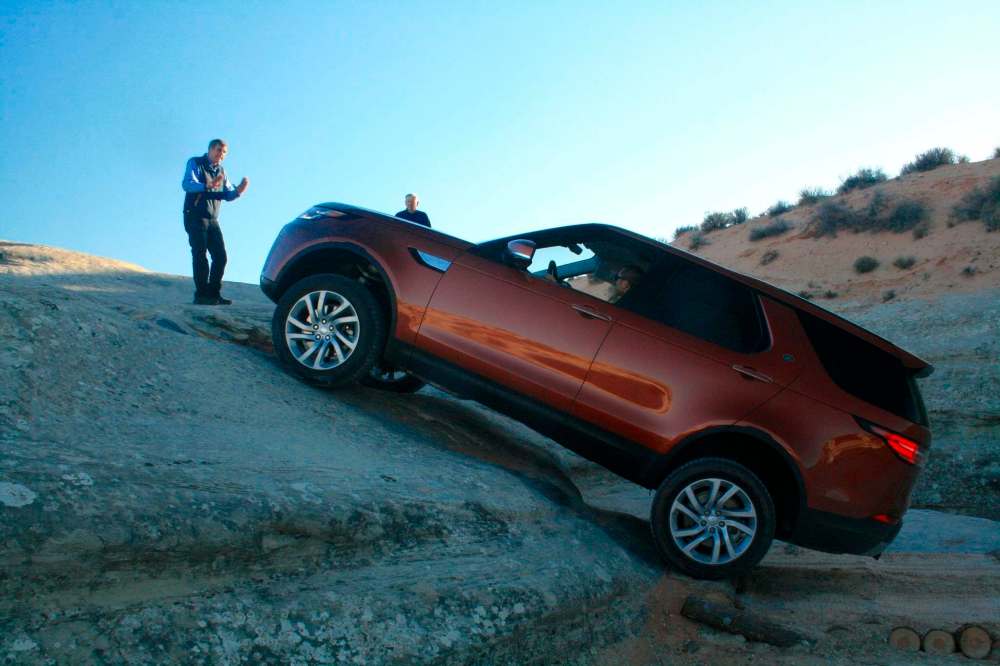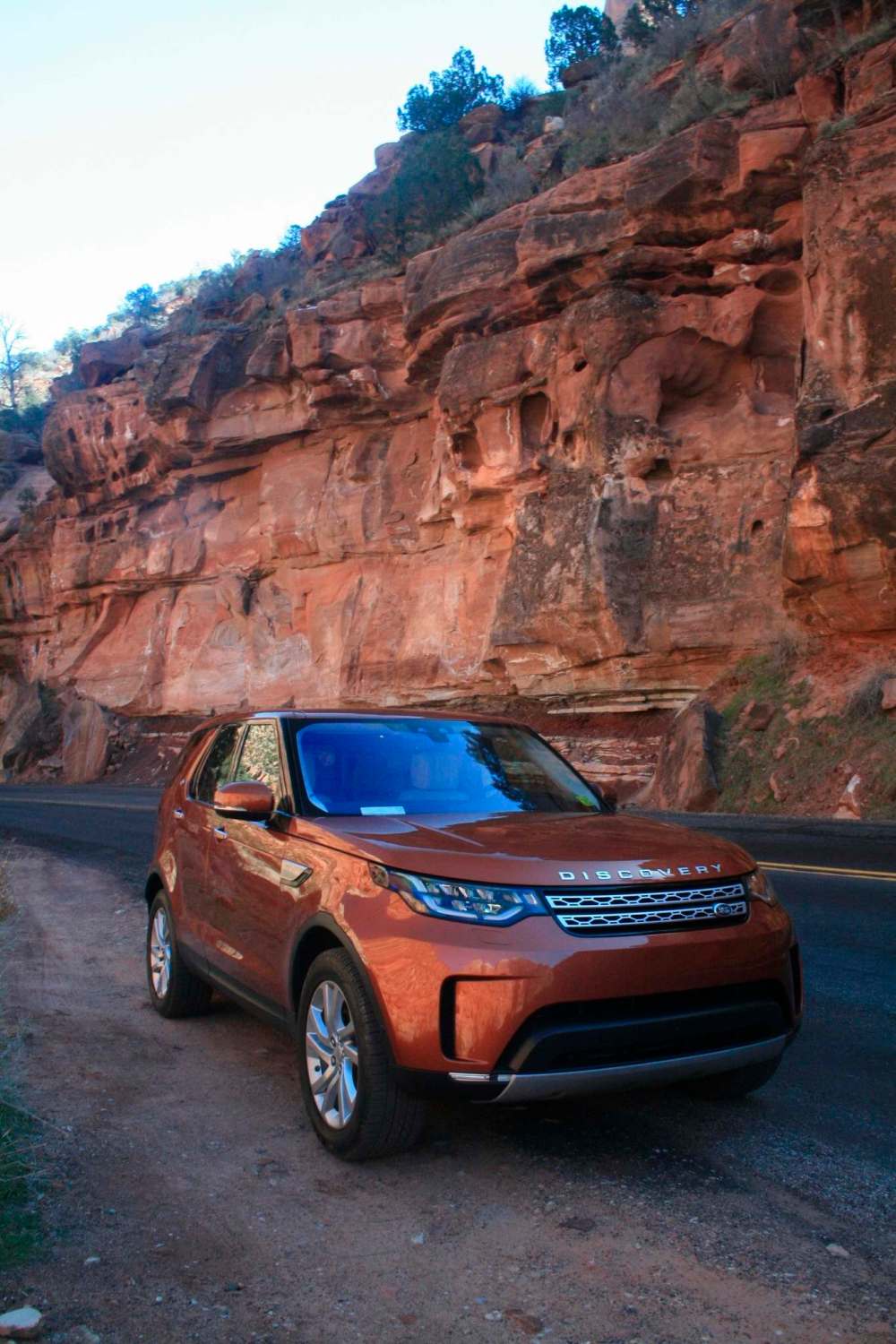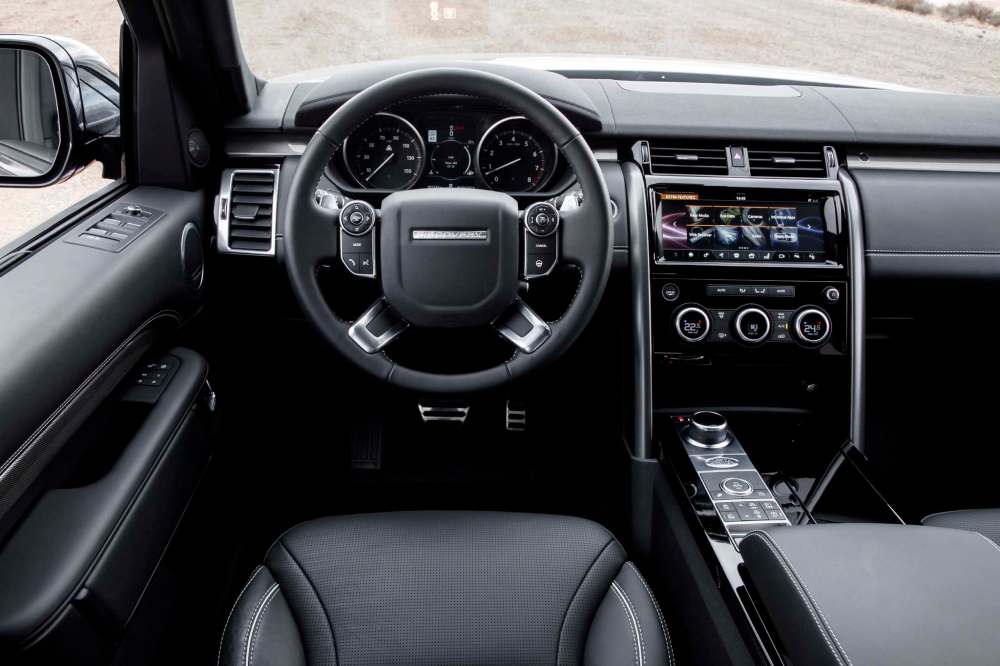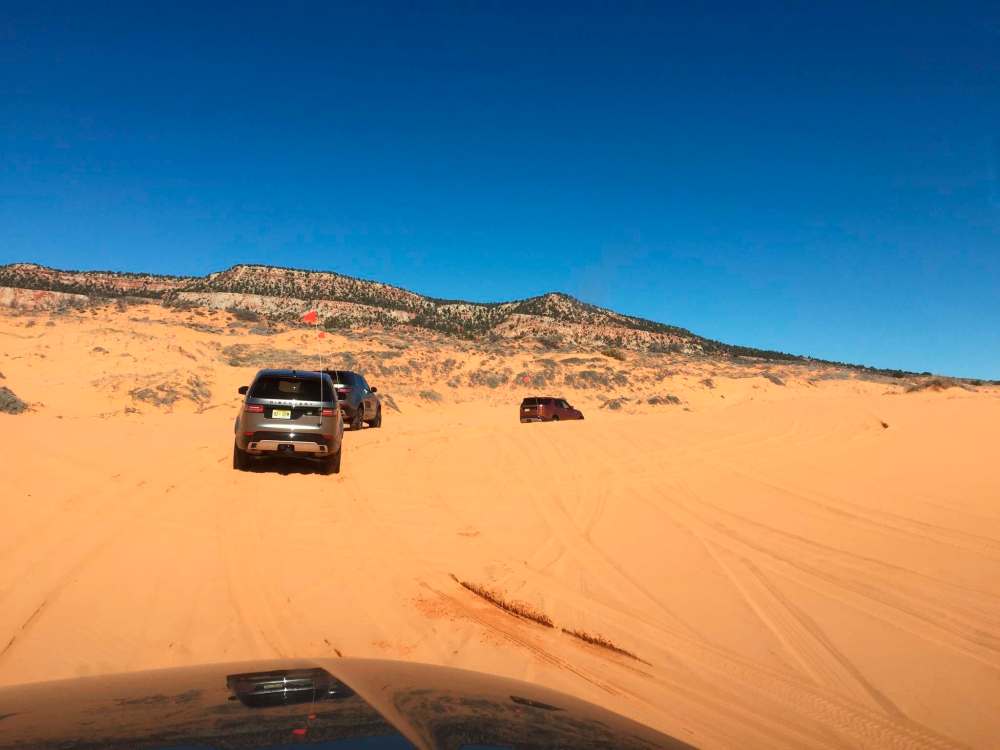All the right moves
Discovery most capable off-road vehicle in Land Rover's lineup
Advertisement
Read this article for free:
or
Already have an account? Log in here »
To continue reading, please subscribe:
Monthly Digital Subscription
$0 for the first 4 weeks*
- Enjoy unlimited reading on winnipegfreepress.com
- Read the E-Edition, our digital replica newspaper
- Access News Break, our award-winning app
- Play interactive puzzles
*No charge for 4 weeks then price increases to the regular rate of $19.00 plus GST every four weeks. Offer available to new and qualified returning subscribers only. Cancel any time.
Monthly Digital Subscription
$4.75/week*
- Enjoy unlimited reading on winnipegfreepress.com
- Read the E-Edition, our digital replica newspaper
- Access News Break, our award-winning app
- Play interactive puzzles
*Billed as $19 plus GST every four weeks. Cancel any time.
To continue reading, please subscribe:
Add Free Press access to your Brandon Sun subscription for only an additional
$1 for the first 4 weeks*
*Your next subscription payment will increase by $1.00 and you will be charged $16.99 plus GST for four weeks. After four weeks, your payment will increase to $23.99 plus GST every four weeks.
Read unlimited articles for free today:
or
Already have an account? Log in here »
Hey there, time traveller!
This article was published 10/03/2017 (3193 days ago), so information in it may no longer be current.
SOMEWHERE IN THE UTAH DESERT — The coral pink sand is spraying everywhere, each wheel shooting up showers of silica as the SUV manages to maintain momentum up the sandy slope.
It’s the second day of the global launch of the 2017 Land Rover Discovery and we’re at Coral Pink Sand Dunes State Park and giving the Disco its hardest off-road test of our visit. It passes with flying colours. And flying sand.
The latest Discovery was unveiled in September as an all-new, three-row, seven-passenger SUV designed to be the most capable off-road vehicle in Land Rover’s lineup, but without sacrificing on-road comportment.

Based on our variety of tests here, it’s hard to dispute the off-road bits. It climbed rocks like a billy goat, sashayed through sand like a camel and wades through up to 900 millimetres — nearly a metre — of water. “It will actually do a metre of water, but the back end starts to float,” chief engineer Alex Heslop said.
There are a pair of engine choices, a 340-horsepower supercharged V-6 gasoline engine and a 254 hp turbocharged V-6 diesel. Base prices range from $61,500 to $82,500. The gas models come as SE ($61,500), HSE ($68,500), HSE Luxury ($75,000) and First Edition ($82,500). Diesels only start at HSE, and are a $2,000 premium, meaning the jump to a diesel from a base gas model is $9,000.
Launch is set for the middle of 2017.
Optional equipment is required to achieve full off-road ability: this includes a two-speed transfer case, air suspension to allow for raising and lowering the vehicle, all-terrain progress control (think of it as cruise control for off-roading) and advanced trailer assist.
Buyers can choose between a single-speed and two-speed transfer case, but in all instances, the Discovery comes with full-time four-wheel drive and Terrain Response 2 Auto, which in automatic mode will monitor a variety of sensor inputs to automatically adjust for different road conditions. Drivers can also force selections of snow, sand, rock, grass, gravel and snow and mud and ruts.
In our dune-crawling exercise, choosing sand mode disabled stability and traction control. Wheelspin is inevitable on sand and shutting it down would leave you stuck.
Earlier in the event, we took the Disco through a challenging rock-crawling activity. At one point, the car was perched on three wheels with the right front wheel two feet in the air. Not only did all the doors open and close properly, zero torque was sent to the suspended wheel when it was time to resume driving.

In each exercise, we ran with the factory-equipped tires. For the sand, event staff deflated the tires to 15 psi on the front and 18 psi on the rear, to maximize grip.
Our trip included a tour through Zion Mountain National Park, a stunning area of deep red sandstone cliffs and an entertaining, twisty road. It ended at Amangiri Resort, an exclusive retreat favoured by Hollywood’s rich and shameless.
Aman in Sanskrit means peaceful and giri means mountain. It lives up to the name. Amangiri is located against a mountain in the middle of nowhere, with minimal signage. It is not a place you will ever stumble upon. The hotel is built to have a minimal visual impact on the surrounding terrain and is constructed in such a way as to not take anything away from the scenery. It makes the terrain the star. It also charges anywhere from US$1,800 to US$8,500 a night.
The changes to Discovery go beyond its off-road prowess. The interior remains true to the Land Rover personae, but with some significant upgrades. The first is a touch-screen infotainment system that combines a multitude of functions in an easy-to-use format.
A couple of minor complaints: more functions could be brought out to actual switches to make operation a bit easier, though I appreciate the use of a real volume control. Such is a knob that is conspicuous by its absence when you need to turn down the audio in a hurry.
As well, a minor glitch appeared once when I tried adjusting the parameters of the navigation display: the system took me to the menu to select different ways to view the route, but then locked up. It wouldn’t let me back into the map display or activate any of its other features.

Our coffee stop was a short drive away and the navigation system was still directing us with verbal commands, so we just left it. Once we shut off the vehicle and the system reset, all was fine for the rest of the event.
Both engines were brilliant and both had their strong points. The diesel had the most low-end grunt, but — as is typical for diesel engines — ran out of horsepower at the top of the power band. The supercharged V-6 — delightfully referred to as a petrol by Land Rover’s U.K.-based event staff — didn’t quite match the diesel’s low-end power, but maintained its torque longer as the engine speed climbed.
The diesel was very quiet, with only the tell-tale rattling of marbles in the engine bay occurring when it was under load, while the petrol engine had a glorious exhaust sound. That aural symphony comes with a price, however. The diesel is rated at 11.2 l/100km city and 9.0 highway. For the petrol, your fuel bill climbs. It’s rated at 14.7 city and 11.2 highway.
Does the math work out to favour buying the diesel? Kind of. If you are already shopping HSE or higher, the difference is $2,000. Payback for the added cost kicks in about 57,000 kilometres later. If you’re looking at the SE, stick with the gas engine. The $9,000 difference bumps payback to more than 200,000 kilometres.
For leasing, the case for diesel is considerably stronger. The math for leases suggests every $1,000 in price difference translates into $25 each month. Can you save $50 a month in gas? And if you can’t, you might find the gap narrows enough to make the diesel worthwhile. I’d probably prefer the diesel, just due to its added low-end power.
Pricing for Discovery is quite an interesting contrast with its mainstream counterparts. While Land Rover staff suggested few, if any, buyers will cross-shop it, it’s worth noting that the base price of the Disco overlaps slightly with the top end of Explorer. You might be giving up some toys, but you’ll be gaining some cachet.

As good as Explorer is, nobody will notice that you drive a top-end model. Just like nobody will notice you drive a base-model Disco.
Nobody at Land Rover expects its customers to explore the full range of the Discovery’s capability. Yet if only for bragging rights, off-road ability is a prime purchase decision.
“If capability is defined as towing a boat trailer out of a lake up a slippery, grassy slope, then yes, a great deal of our customers will use the vehicle’s capability,” Heslop said.

Our newsroom depends on a growing audience of readers to power our journalism. If you are not a paid reader, please consider becoming a subscriber.
Our newsroom depends on its audience of readers to power our journalism. Thank you for your support.
History
Updated on Thursday, March 9, 2017 3:31 PM CST: Photos reordered.


